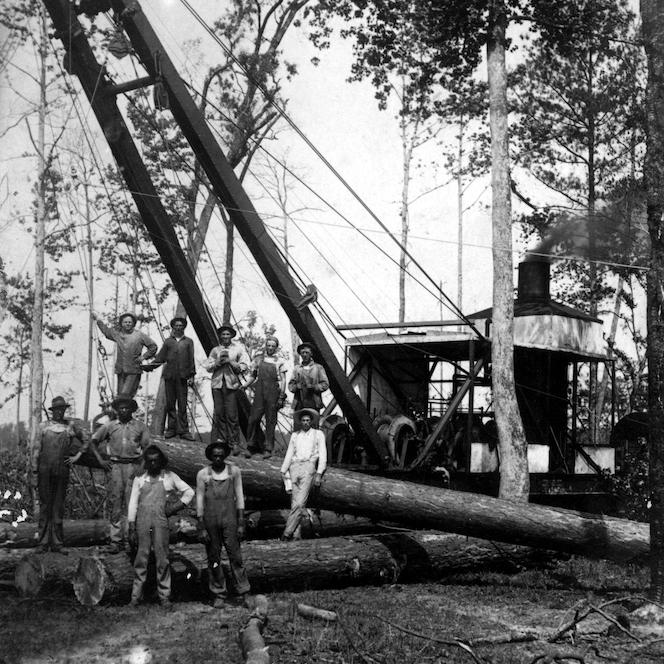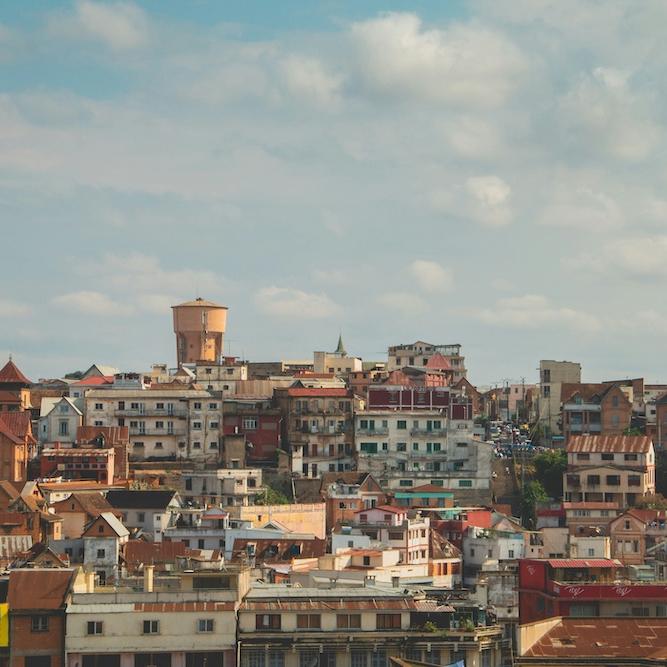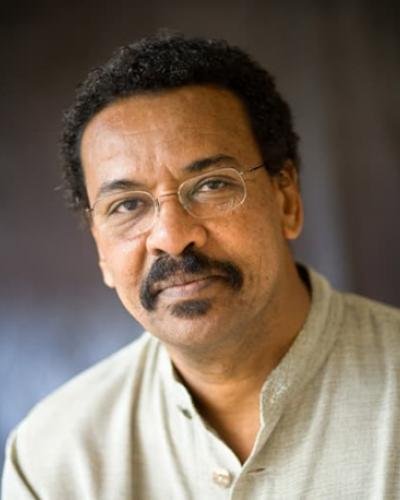After exploring the Surrealist movement in Egypt and some of its leading proponents, the Sharjah Art Foundation this autumn moves on to examine the “Modern Art movement in Sudan and the politics surrounding it”.
The co-curators for the three exhibitions exploring this theme are Shaikha Hoor Al Qasimi, director of Sharjah Art Foundation, and Dr Salah M. Hassan, Goldwin Smith Professor at the Institute for Comparative Modernities, Cornell University.
It is of utmost importance that Sharjah Art Foundation, as part of its year-round programming is taking the lead in organising the first-ever retrospectives of important artists from the region — Kamala Ishaq and Amir Nour, Al Qasimi told Weekend Review.
The anchor show, “The Khartoum School: The Making of the Modern Art Movement in Sudan (1945–present)”, is a major historical survey of the modernist art movement in Sudan.
Organised around the foundational figures and pivotal moments of the Khartoum School, the exhibition (at Sharjah Art Spaces, Building GH&P) is a mammoth effort spanning the mid-20th century, including the last two decades of British colonial rule, as well as the post-colonial eras up to the present day, to reflect on the nuanced visual vocabulary and complex legacy of the movement.
As the curators point out, the term Khartoum School, coined in the early 1960s, is much contested. Many founders disavowed it, and others rebelled against it, even though they were stylistically and aesthetically connected with it as a movement.
This exhibition uses the all-encompassing term to signify the dynamic, multi-faceted and fluid movement which influenced the development of modernism, not just in Sudan, but more broadly in Africa and the entire Arab world.
Drawing on never-shown archival material, this exhibition is an effort to document the history of the movement and distil the ideas behind it.
Juxtaposing paintings and drawings — the traditional genres of visual arts in which most Sudanese modernist artists were active — with pottery, ceramics, sculpture, photography, film, video and performances, this interdisciplinary show highlights both the breadth of modernism in Sudan and the interrelated nature of its various genres, sub-movements and groups.
The exhibition explores the depth of the aesthetics of the Khartoum School and its diverse styles.
It traces the early generation of artists of the modernist movement in Sudan such as Osman Waqialla, Ibrahim El Salahi, Bastawi Baghdadi, Ahmed Shibrain, Abdelrazig Abdelghaffar, Mohammad Omer Khalil, Taglesir Ahmed, Mohamed El Hassan Abdel Rahim (Shaigi), Siddig El Nigoumi, Magdoub Rabbah, Hussein Shariffe, Ahmed Hamid Al Arabi and Griselda Eltayeb.
The works of these pioneers merged Western modernist conventions of form and style with their own visual vocabulary, subject matter and Sudanese aesthetics.
There is strong representation in the ceramics section where the works of Nigoumi, Mohamed Ahmed Abdullah, Salih Al Zaki, Abdelghaffar and Shaigi are shown highlighting their considerable strengths in stoneware, burnished earthenware, ceramics, marble and sandstone.
Nigoumi’s work is especially relevant as he spent a major part of his life in the UK, teaching and popularising the art of burnished ware. While he blended a wide range of styles in his work, Arabic calligraphy was built into the shapes he created. Moreover, he used his position in the West to help build understanding between cultures and his art to promote cross-cultural religious tolerance and understanding.
Works by relatively younger artists whose careers overlapped with the early pioneers, such as Salih Mashamoun, are also presented.
These revolutionaries fashioned an aesthetic and identity which was distinctly “Sudanese” but also transcended its national boundaries to include continental African and Islamic motifs and elements.
Influential groups
This exhibition also presents the work of the Crystalist Group, Madrasat Al Wahid (School of the One) and artist-critics such as Hassan Musa and Abdalla Bola who have enriched the arts scene through their practice as well as their critical interventions and writings since the early 1970s. These three major artist groups sought to distance themselves from the ideology and visual vocabulary of the earlier generation of the Khartoum School.
In highlighting these groups and artists, the exhibition demonstrates that the intellectual and conceptual practices of Sudanese artists are inseparable from global conceptualism as a movement.
The solidification of British colonial rule in Sudan was supported by amateur photographs taken by British soldiers, merchants and travellers as early as 1899.
This exhibition demonstrates how film, the press and other mass media have all been crucial to modernity since the advent of British colonial rule and through the post-colonial era.
The exhibition highlights the work of two pioneer master-photographers, Rashid Mahdi and Gadalla Gubara, as well as other studio photographers, for example, Abbas Habib Alla, Mohamed Yahya Issa, Fouad Hamza Tibin, Osman Hamid Khalifa, Omar Addow, Richard Lokiden Wani and Joua, in the context of the historical linkages between photography, decolonisation and self-representation.
The documentaries and photographs from Gad Studio founded by Gubara, for example, provide rich and fascinating resource for studying a society under transition and in the grip of modernity like the rest of Africa, Middle East and Asia. Gubara’s work is very much a result of his own individual effort and enterprise to record the changes occurring around him and also to get his family involved in this creative endeavour.
The press has always been a site of resistance to colonialism as well as a vibrant space to debate Sudanese identity and modernity in the context of decolonisation. Cartoons in daily newspapers and magazines gained popularity, especially in the aftermath of the 1964 revolution, and became an effective tool of criticism in socio-political arenas.
The exhibition features political cartoons by not only seasoned pioneers such as the late Izz El Din Osman and Hashim Carori but also the work of contemporary cartoonist Khalid Albaih, who has become well-known for his biting humour and sharp commentary on issues ranging from human rights to migration and regional conflicts.
The exhibition also includes a selected number of works by individual Sudanese and Sudanese diaspora artists, such as the Sudan Film Factory, Sudanese Film Club and Black and White Group, who are all active in the contemporary art scene locally and internationally.
Kamala Ishaq
The solo exhibition, “Kamala Ibrahim Ishaq: Women in Crystal Cubes” (at SAF Art Spaces, Building J), presents works by one of the leading influential artists and pioneering modernist painters. A variety of paintings including early works by the artist, and new works commissioned by Sharjah Art Foundation are on display.
The significance of the show is that this is the first retrospective exhibition to explore the aesthetic and philosophical contributions of this important modernist painter. Ishaq’s role as a pioneering figure in Sudan and the larger Arab and African modern art scene is most evident in her leading role in the formation of the Crystalist Group, the conceptual art movement that she co-founded with two of her former students — Mohammed Hamid Shaddad and Nayla El Tayeb Taha — in the mid-1970s.
Ishaq’s paintings of the period explore and expand on the principles of the “Crystalist Manifesto”, which she helped author and eventually co-signed with the other founding members. The manifesto was a counter-narrative to the hegemony of “Sudanism”.
The Crystalists foreground change and constant “becoming” as defining forces in art practice. The public performances by Shaddad in the early 1970s also deserve mention here. At Sharjah too, his water installation, titled “The Last Supper ‘Elan’”, comprising plastic bags and colours is a brilliant re-enactment.
The title of this retrospective is inspired by Ishaq’s memorable 1978 exhibition, “Women in Crystal Cubes”, which featured large canvases dominated by depictions of distorted female faces imprisoned in crystalline cubes and spheres.
This retrospective traces Ishaq’s half-century journey as an artist. The exhibition begins with her graduation from the College of Fine and Applied Art, Khartoum, in 1963; follows her development in London, where she studied mural painting at the Royal College of Art between 1964 and 1966; and covers her return to Sudan and her three-decade tenure as a professor in the painting department at the College of Fine and Applied Art.
The exhibition also examines her output during subsequent years in London and Muscat and her return to Sudan a few years ago.
Ishaq’s studies at the Royal College were formative for her career. Her early interest in the work of the English painter and writer William Blake, in particular his exploration of spirituality and the incarnation of divinity through the sublime power of poetry, resonated with her own contemplation of “Zar” [spirit possession rituals by Sudanese women].
The unlikely convergence would lead to the development of central themes and styles that run throughout her oeuvre. Such influences can be seen in the distorted faces and figures of women in her paintings, mostly rendered in dark monochromic tones of brown. Even when brighter colours are used, Ishaq rigorously and deliberately mutes the palette, as in her series inspired by the brooding figurative paintings of Francis Bacon.
Yet interpretations of Ishaq’s output cannot be confined to one strict style, as she moved on to explore other themes, which are reflected in the multiplicity of her oeuvre as a painter. More recent explorations looking at the world of plants, for example, have become a rich source of formal and compositional innovation, as seen in the series presented within this exhibition.
There is a unity to her vision even as she uses various materials and media for her work. Figures intermingle with Nature and other primordial forms.
Moreover, she has continuously pursued a practice in graphics throughout her career. She is well-known and respected for her collaborations with Sudanese poets, writers and scholars, contributing drawings and paintings to their publications. Examples of these works are exhibited alongside her paintings.
Amir Nour
The exhibition, “Amir Nour: Brevity is the Soul of Wit” (at the Bait Alserkal, Arts Area), covers the work of the Chicago-based Sudanese sculptor-artist, comprising drawings, photographs, sculptures and new commissions drawn from images of the domes, arches, calabashes and sand hills of Sudan.
Nour’s works combine traditional African imagery with the visual vocabulary and materials of Western minimalism and the title of the show references an Arabic proverb which the artist often uses to describe his practice and its divergence with minimalist ideas.
This is the first retrospective of Nour, offering an in-depth survey of the last five decades of his career. On view in this exhibition are 12 new commissions, several of his sculptural works in a range of media and a selection of his rarely seen paintings, drawings and photographs.
His experience as a Sudanese living in the West underlines Nour’s sculpture as he creatively moves between minimalist forms and Africanist referential ideas, integrating methods, techniques, forms and ideas. His sculptural tendencies can be seen in his paintings, too.
For art students and younger artists this show can be a rewarding and highly educative experience as a display of Nour’s design sketches, scale models of his bigger works reveal the way he executes his artistic ideas and thinking, as well as the detailing that went into each work.
In Nour’s sculptures, geometric or hemispheric objects are reinterpreted within the context of his history, environment and tradition. The elements referenced in Nour’s practice — domes and arches, cattle horns, calabashes and sand hills — are all part of the landscape of his homeland and evidence of his aesthetic concerns as an artist.
His sculpture “House”, for instance, references the form of the adobe architecture of northern Sudan. In “Melancholy Portrait” he uses simple geometric forms moulded in a Cubist style, which can be recognised in much of African sculpture.
In other works, such as his stainless steel masterpiece “Grazing at Shendi”, which is composed of 202 semicircles of varying sizes, the shapes are more formalised and highly abstracted. Inspired by his childhood memories of watching goats grazing on the hillside near his hometown, the arrangement of these repetitive units suggests the sloping hills and the animals’ backs, while variation in their sizes evokes a sense of distance.
“Brevity is the Soul of Wit” presents Nour as a transformational figure, not just within the African art movement, but also within the historical discourse of international modern and contemporary art. He saw himself as a “transitional man” from tradition to modernity and his sculptures spring directly from and are a direct expression of Sudan’s Afro-Islamic culture, making its presence felt in the here and now.





